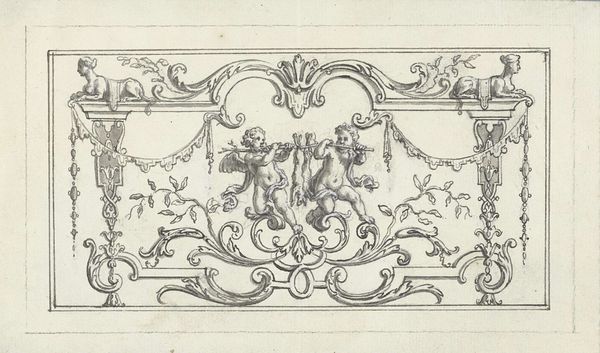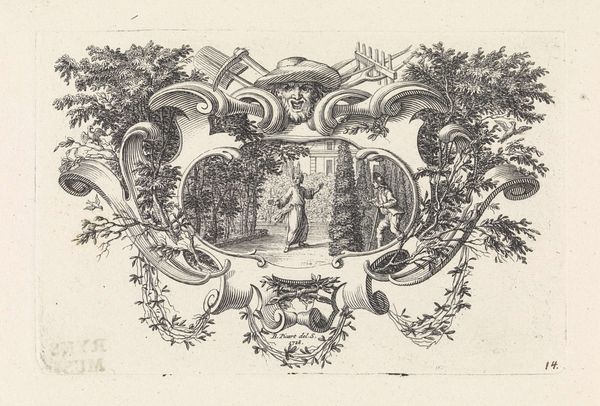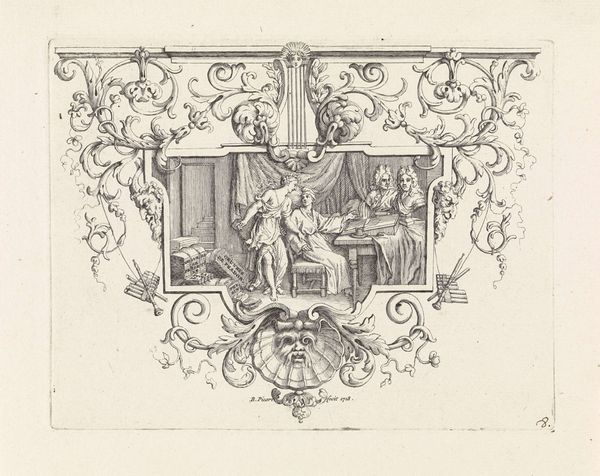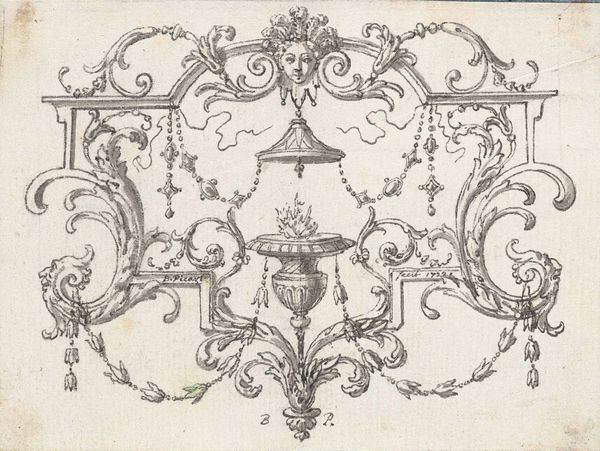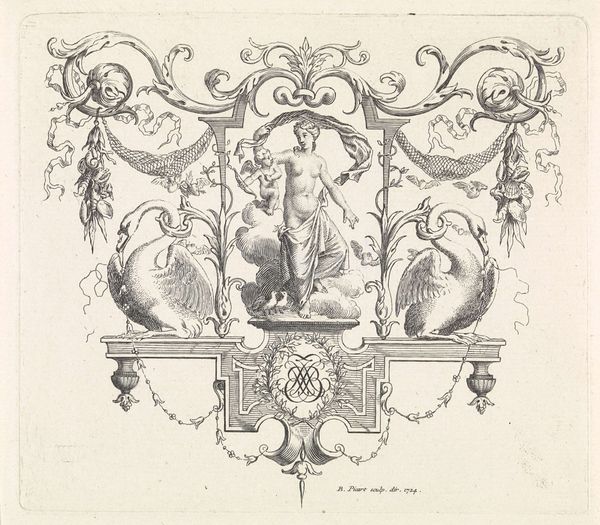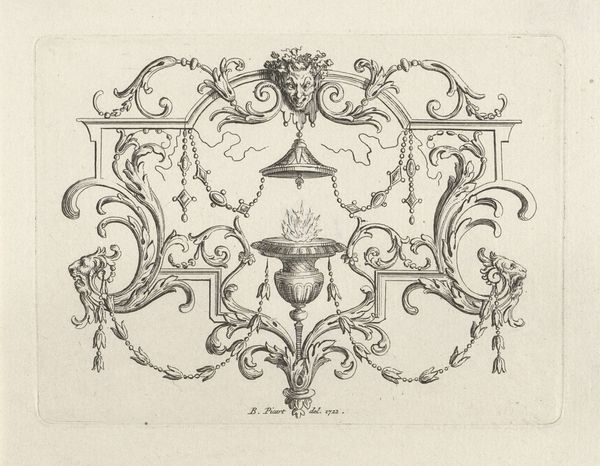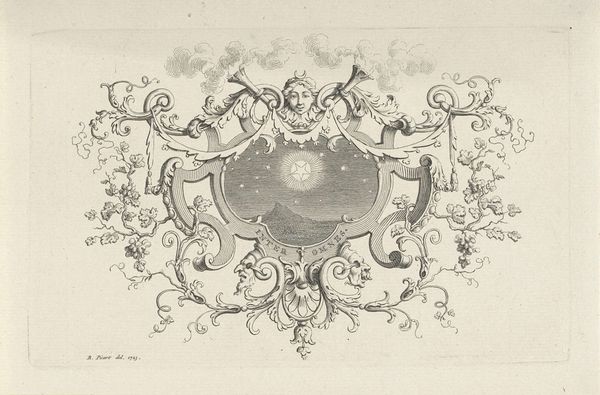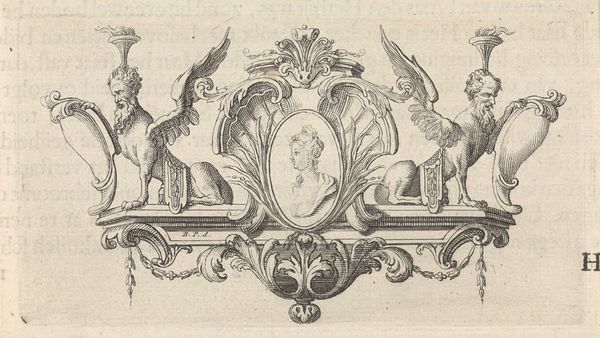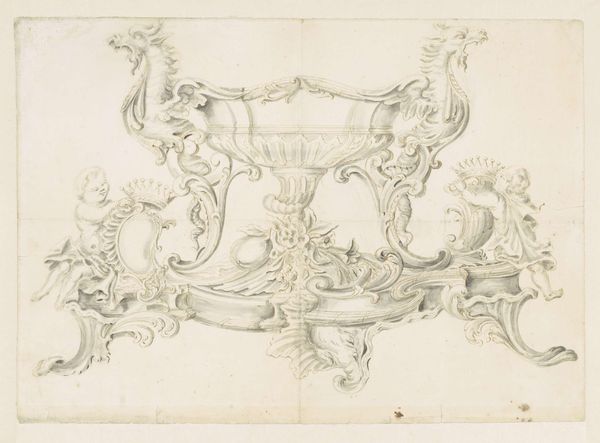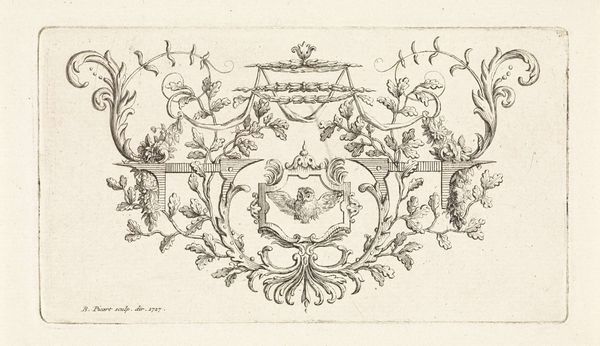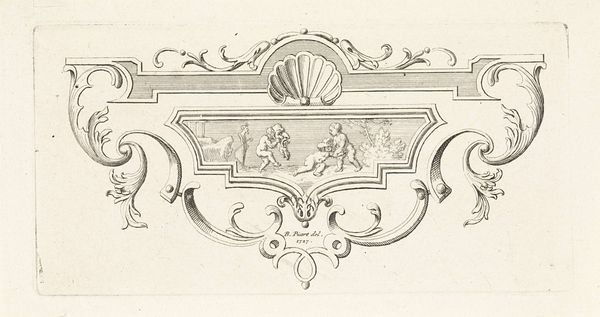
Paneelvulling met putti met guirlandes ter weerszijden van een lier 1683 - 1733
0:00
0:00
bernardpicart
Rijksmuseum
drawing, ink
#
drawing
#
baroque
#
figuration
#
ink
#
decorative-art
Dimensions: height 92 mm, width 154 mm
Copyright: Rijks Museum: Open Domain
Curator: This is a panel filling from between 1683 and 1733, showcasing putti with garlands on either side of a lyre, rendered meticulously in ink. What's your immediate take on this decorative drawing? Editor: It’s quite ornate! There’s a real sense of theatricality in the putti and their garlands, and the level of detail is striking, considering it's "just" ink on paper. There is something troubling about cherubs decorating a space, isn't there? Curator: It certainly speaks to the Baroque aesthetic – an era characterized by its love for ornamentation. Given that it's in the Rijksmuseum's collection, its creation and function within Dutch society becomes really interesting to unpack. These designs were integrated into larger architectural programs. Editor: Right. It highlights the paradox of the decorative arts. This isn't just visual pleasure. The elite of the day used ornament like this to reflect social, political, and economic hierarchies in their lives. Where would something like this go, architecturally speaking? Curator: Likely in a stately home. These drawings often served as models for wood carvings or plasterwork, adorning walls or ceilings, reinforcing power and class distinctions through sheer visual spectacle. Editor: Yes, Baroque style, for all its aesthetic appeal, often functioned as a visual language of control. What about the lyre? Is there something deeper in it as the central point of the piece? Curator: Absolutely. The lyre is a powerful symbol here. In classical mythology, it’s linked to Apollo, the god of music, harmony, and enlightenment. So, placing it centrally elevates the surroundings, aligning them with those qualities. It wasn’t uncommon to decorate walls, furniture, and other items with these images in that period. Editor: So it represents the owner or intended user aspiring toward high culture and enlightenment values… or simply signaling they possessed them already. Thank you for sharing your insight! It has been really fascinating contextualizing what could so easily just become another beautiful, if somewhat emotionally remote, historical artwork. Curator: My pleasure. It's in grappling with these dualities—beauty and social function, art and power—that these works truly resonate today.
Comments
No comments
Be the first to comment and join the conversation on the ultimate creative platform.
